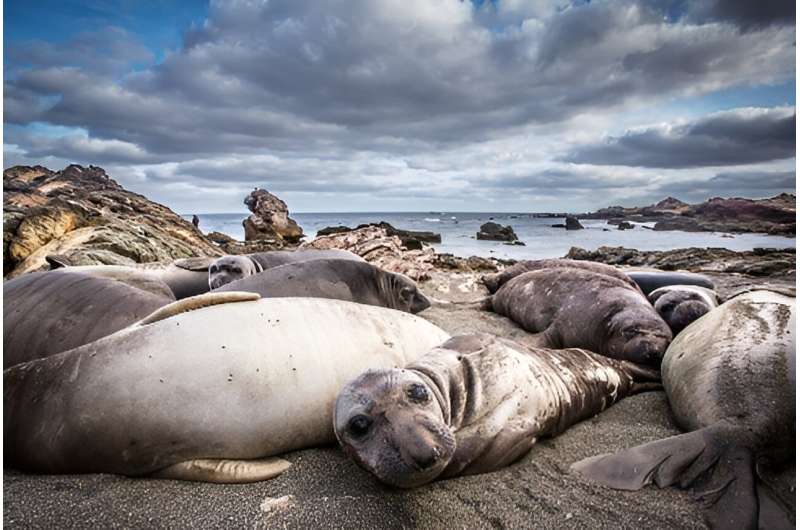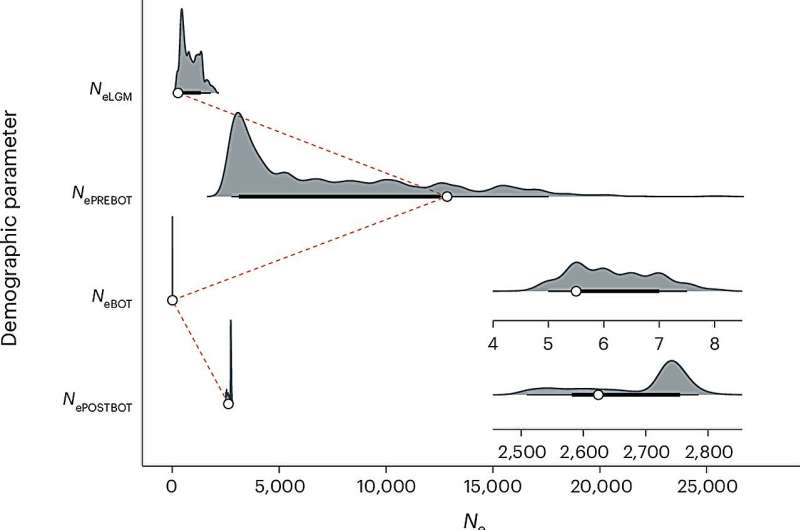
Northern elephant sign. Credit: University of Bielefeld, Martin Stoffel
Northern elephants have made a remarkable comeback after escaping near-extinction from poaching, but new research reveals a persistent genetic impact on the current population.
Hunted for the oil in their bream, genetic research shows that hundreds of thousands of northern elephant seals that live in the Pacific Ocean have dwindled in numbers. -fewer than 25 animals by the beginning of the 20th century.
The population has now recovered to about 225,000 people, but a new study – conducted by the University of York and Bielefeld (Germany) and published Nature Ecology and Evolution— suggests that population declines have led to the loss of many genes from the northern elephant seal pool, affecting their genetic makeup and health.
A threat to survival
The researchers, who combined genetic data, health records, population structure and genetic markers to conduct the study, did not make the same pattern in the closely related southern elephant seal, which does not receive immediate action.
The findings show how the reduction in the number of people in the population can produce different genetic factors, increasing the risk of having a child and threatening its life. They provide important insights into species conservation and environmental management, the researchers said.

Reconstruction of the recent demographic history of the northern elephant seal based on RAD sequence data from 96 individuals. Credit: Nature Ecology & Evolution (2024). DOI: 10.1038/s41559-024-02533-2
Special statistics
Professor Kanchon Dasmahapatra, lead author of the study, from the Department of Biology at the University of York, said, “Our study shows how a unique type of human history is created. his genetic makeup.
“Severely reduced genetic diversity, including the loss of valuable genetic material, may undermine the ability of the mountain elephant species to cope with future environmental changes, including those of anthropogenic climate change.” causes, changes in species habitats, or even natural hazards such as disease outbreaks.”
The leader of the study, Professor Joseph Hoffman of the University of Bielefeld, added, “All people of different species carry some harmful mutations, although their effects are often hidden. How however, the creatures may face health problems as these changes unfold.
“We looked at many important health characteristics in these markers, including body weight, bone blubber and disease incidence. To our surprise, we did not find any signs of health problems related to inbreeding. We believe that A large number of people can eliminate many harmful changes.”
Other information:
Joseph I. Hoffman et al, Genomic and qualitative outcomes of near-extinction events in the mountain elephant line, Nature Ecology & Evolution (2024). DOI: 10.1038/s41559-024-02533-2
It was awarded by the University of York
References: Seal species carry ‘genetic damage’ after being hunted to the brink of extinction, new research reveals (2024, September 27) Retrieved 29 September 2024 from https://phys.org/news/ 2024-09-species-genetic-scars-exclusion.html
This document is subject to copyright. Except for any legitimate practice for study or personal research purposes, no part may be reproduced without written permission. This content is provided for informational purposes only.
#Seal #species #carry #genetic #damage #hunted #brink #extinction #study #reveals